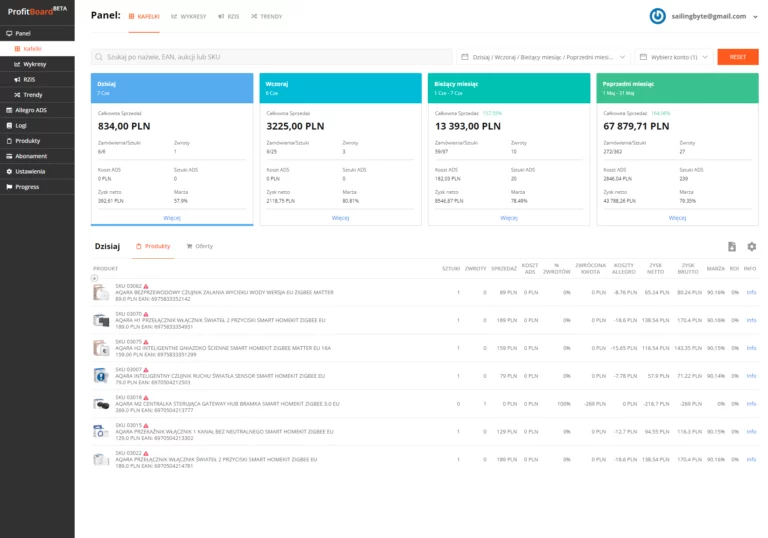Every time a potential client contacts us regarding our services, we are delighted that yet another business decided to trust us with their project. No matter if it is an app, web software, or any other piece of technology they would like us to work on, one of the most important initial questions we will ask is regarding their budget. Why do we ask? Let us explain the reasoning behind the not-so-comfortable question of ‘how much?’ This article will also explain to you how to talk with software house at the very beginning when there is much more unknown than known and how does the process look at the very beginning.
Before We Start Talking – Non Disclosure Agreement
At the very beginning of the cooperation with our clients, we often sign a non-disclosure agreement. This document is a confidentiality agreement issued by many businesses to protect the data, information, and interests of those businesses. Such a document contains a multitude of regulations and clients’ wishes regarding the safety of certain information they decide to share with us. Any respectable company takes time to review the agreement and inspect whether the terms of the cooperation are suitable and reasonable. Very often, legal advice might be required for us to better understand our client’s needs and assess whether our company is able to provide for them.
In light of the mentioned above, it is crucial to know whether all the NDA regulations are relevant to the service provided. It is often the case, especially with smaller projects, that there will not be any need to sign a non-disclosure agreement, because it just might be too small either to continue discussing or even signing such agreement. That would be actually the first reason to ask for a budget.
Of course, it is understandable that at this stage budget may be vague or unknown. But even if range is provided, it is already helpful when moving forward with your case. We would like to know the scale of the project and its requirements before we sign any binding agreement, because it will affect many aspects of planning. If you are unsure on a budget, then maybe you do not have enough details clarified to start actual development – in such case we do recommend starting with Workshops. This works great for smaller projects and startups and it may start even without NDA – because workhops itself should contain information protection clauses aswell.
So after we are introduced to each other, and either signign NDA or deciding to go with Workshops, here comes second stage, in which we will actually dive deeper in what needs to be built and how.
Familiarisation with the Project
Now here comes second obstacle: how well do you know what you want to built, and how well you know what is needed around what you want to build? And is is already documented or just in your head?
Let’s assume first case – you have a very distilled idea, descripiton of functionalities, possibly wireframes, user stories, maybe even database structure. Depending on your project size it might be a 10 page document or a 200 page PDF. In such case it is safe to assume that your idea about what do you want to build is very clear and only thing that you need is maybe NDA and assessment from us. Believe me though: this is a very rare case.
Second case would be the other way around – you have an online business idea, but you are not sure about market alternatives, core functinalities, possibly you don’t know anything about technology and you have never run a business. In such a case it would be your best option to have a Project Workshop. There are many aspects discussed during such workshops, but what’s important for you is that you get your idea verified using only fraction of bugdet required to get service running, and you get all the materials and IP rights to them (that is, at least, standard at Sailing Byte – everything we create during workshop is legally yours to keep and reuse in any way you like).
Third option might be something in between. In short – in such case we will have a meeting or two and probably present you with cost assesment within some budget range. This option can be a middle step itself in between taking any other steps, because it helps to identify possible places where either information or research or knowledge is missing, while still giving rough idea about how the project could look like.
And there is fourth option. That is when you already have something but it needs to be rewritten or maintained. In such case all the talks look entirely different. We would be talking about your current status, your KPIs, what is your measure to success, how do you want to scale etc. In such cases it is most common to finalize all the talks with subscription agreement (essentially Time and Materials – described later on) or body leasing (essentially sub-hiring our developers, system also nicely called team augmentation).
In parallel to any of those options happens additional work and a bit of magic – we familiarize with each other before making more substantial contribution. We learn how to talk with you, speak your language, learn your goals, work on communication and so on. This is often ommited aspect of this stage, while I belive that it is crucial for healthy cooperation. This is one of the aspects how we actually implement our motto: Partnership in Mind.
As you can imagine and as you can infer from descriptions above, this step is not only about development and setting testing goals. It is also about learning how to work with you and know your business. It is about discovering and thinking through your strategy. It is about finding and pinning strong sides and weaknesses. It can be about your competition. It is also about waging our experience against your idea, and much more. Hopefully, after this stage you will end up with actually better understanding of your SaaS idea.
Development is Probably a Simple Click of a Mouse… is it?
When it comes to new situations more often we tend to trust our assumptions. This human behaviour also applies when it comes to business. Some business owners see only the final effect of their ideas. Little do they realize how much or what type of work is involved in a certain project’s completion. Some have never purchased custom software and therefore have slightly too low expectations of the cost. Truth be told, custom software is not cheap to build or maintain. And that’s another reason why we want to know your budget: it is a very good example of a so-called reality check. We raise the question about the budget because we not only know the ins and outs of the service. Our Sailing Byte team also provide any costs the client might not have considered. Such costs include, for instance, future maintenance costs, monthly subscriptions, infrastructure or domain payments.
The budget helps not only us but also (and more importantly) the clients. They can assess whether the costs they expected to incur are realistic or perhaps the assumptions they initially made were incorrect. At this stage, we can also advise or help choose an alternative path to achieve the goal the client set out for. It can either be the change of features of the software or the creation of a slightly different app. It might be a technology change. It might be proposition to shift some budgets: for example from or to marketing bucket. It might be more focus on one aspect of the application, or maybe creating fancy landing page first.
You can read more about the cost of coding professional websites in this blog post, because it can be either simple copy-paste or complex process with complex outcomes (for landing page it will definitely be simpler and cheaper).
So, no. This is almost never a simple click of mouse, but rather a process consisting of many different variables, that can be started in many different ways and that can be planned accordingly with development strategy and budget.
The Three Development Pricing Models
When we are on the subject of advice, the client’s budget also helps us choose the way we should approach the pricing of project. There are many pricing models, but we are using three most common and possibly best for us and our clients: Time and Materials, Fixed and Hybrid. Every one of them is suitable for different project types, business state and strategy; therefore, it is essential for us to know how many resources the client decided to devote to develop a certain app or software. Let me briefly outline the types of project development pricing models and when we apply them:
- T&M (time and materials) – this model of product development means that the client will pay for the project according to the time spent on the completion of that project, as well as the number of materials used during this process. The T&M pricing model is especially beneficial with large, complicated projects or where it is not possible to accurately estimate the extent of the project. Also, the time and materials model works very well when the boundaries of the project are not set, and when it is likely that the requirements will change over time. This is actually great model for startup development and is compatible with Agile methodologies, which are used for example by SpaceX. Additionally, develoment can be started immediately after signing agreement – where most of our clients end up anyway.
- Fixed-price assessment – this type of approach indicates that the price of the project is set and not dependent on materials used or the actual time spent on the completion of the project. It means that all materials must be forseen and either delivered by client or added to bill by software house. This model is used with projects where requirements are very well documented, functionalities described, user stories mapped, possibly wireframes delivered, business model tested and established. This also indicates that risk factor needs to be included in assessment. As you can see – a lot of work needs to be done actually beforehand making such assesment, so it is the riskier, the larger the project. On the other hand it works well with small, uncomplicated projects which have clear and well-defined requirements. To sum up: if project description is really detailed, then assessment should be possible to be done as fixed price.
- Hybrid assessment – this model uses T&M techniques to estimate the cost of a given project in which all the requirements are not specified initially. Potential risks (including imprecise information) are identified, assessed and represented as price range. At the same time, client learns where are potential gaps, what is deliverable and for what price. At the end, client pays a fixed price based on the estimation given, but within a designated range. Such approach splits risk between client and software house, acutally allowing to reduce maximum price. As a result, this model gives the client a piece of mind regarding the costs but also stresses that there are some parts that may turn out to be more time-consuming or problematic, which potentially need more attention.
Thanks to knowoing of the client’s budget, we can initially assess which one of the above-mentioned models will be the most suitable for the client’s project. If it is relatively small, then fixed price will be best, if it’s medium then most probably hybrid pricing will be best and if it is large and possibly monthly – it would be best if it was developed as Time and Materials. It allows us to inform the client at an early stage about what the available pricing models are and which one we think will serve best in our cooperation. You can read more on development pricing models and their impact on business here.
How do we Price Our Development Services
Although the budget helps to establish many aspects of cooperation with clients, it does not affect one aspect: our pricing. However, some assume that revealing the budget, which turns out to be too high, may prompt the developers to inadequately raise the costs of their services or prolong the time of their work. It certainly will not be the case with Sailing Byte. We ask a series of relevant questions about the product and, thanks to our experiences in software development, we can adequately assess how much certain products’ development processes cost. Also, the budget is only known to our client’s representative and a relevant person in charge of the project on our side. Our developer’s estimation provides the pricing based on the time needed to complete a given task, without insight into the client’s budget.
What if You do not Have a Budget
If you do not know how many resources you should devote to a project, then probably your best option are Workshops. You can book a project consultation during which we can guide you how to proceed with it and we will answer any questions you may have. Based on our knowledge, experience, and expertise we can help with the estimation of the costs of your idea’s implementation. We will not only assess what costs are essential for the project implementation, but we will also advise on future expenses, such as marketing or maintenance costs. Why wait, when there is a contact link just below? Hope to hear from you soon!




